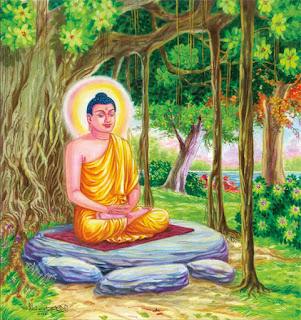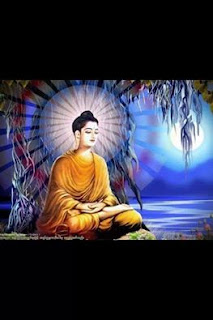There are three main concepts that hold away regarding the
ultimate origin of beings. Two of them are religious concepts and the other is
a scientific concept. Some scientists believe that all beings originated or
evolved from matter. Many religious leaders attribute the ultimate origin of
man to God and are of opinion that God created man. But Buddha rejected both
these concepts.
The Visuddhi Magga or Path of Purification mention “Na hetha
– Devo và Brahmà và Saüsàrassathi kàrako Suddhadhammà pavattanti Hetusambhàrapaccayati”
There is no God or Brahma who is the creator of this world.
Empathy phenomena rolls on, all subject to causality.
Whatever other religions and science may teach with regard
to the ultimate origin of human beings, Buddhism pertinently says “Anamataggo
yaü Bhikkhave Sansàra pubbàkoti na pannàyati avijjànivaranànaü sattàü tanhà
saüyojanànaü sandhàvataü” ( Anamatagga Sutta)
Inconceivable is the beginning monks, of this faring on. The
earliest point beginning is not revealed of this running on, the faring on, of
beings located in ignorance, tied to craving.
What is the Buddha’s concept? The Buddha’s concept is Beings
are subjected to endless round of Birth. That all beings are result of a Karmic
process determined by past/ present actions, which is the cause for effects of
rebirth.
In this manner, action and re-action cause and effect death
and rebirth, prevail and continue to prevail. It is like the tree producing the
fruit and the fruit in turn producing the tree and continues to prevail as an
unbroken process. We can only see it happening in the present context. But we
cannot trace back to the beginning of this process nor can we visualize the end
before the attainment. However much we try we would never find the first mango
tree nor can we find the last mango tree but we can see how a tree produces the
fruit and how the fruit produces another tree.
The fully matured fruit separation from the tree is like the
death. Its contact with the earth is birth. There is no interval as such
between the tree and the fruit and the fruit and tree. It continues to grow.
Thus from the day the fruit was born by the tree and up to the producing of
another tree, similarly within the human mind there is energy to produce
another being, human being may die but the energy to be reborn does not die
completely. It grows gradually. But it faces to the momentary decay and death,
as (uppàda, tithi, bhanga) genetic, static and dissolving. This energy is
craving and ignorance and the resultant Karmas or action, which will continue
to accumulate till one gets rid of all defilements with the rise of wisdom and
the resultant cessation of craving and kamma which will put an end to rebirth
ultimately reach Nibbàna.
In the Kosala Sanyutha, The Buddha has mentioned, whatever
kamma that we accumulate in this life are being carried over to the next.
Eso nidhã sunihito Ajeyya anugàmiko Pahàya gamanãyesu Etaü
àdàya gacchati. (Nidhi Kandha Sutta)
Whatever good or bad kammas that you have accumulated, are
like a treasure, cannot be taken away by another. It follows you and is being
carried by you to the next life.
May all beings be well and happy & attain the fruits of
Nibbana.
Suranda Weediyage
BA, Tripitakachariya, Dip in Pali/ Buddhism (Pali & Buddhist University of Sri Lanka), HNDBF,
surandalk@gmail.com
http://www.thebuddhadhamma.wordpress.com



















